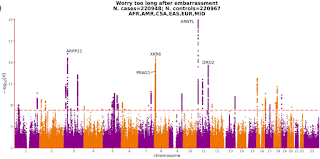In medical school, my Psychiatry Residency, and even the Psychiatry Board Exams, the concordance rate noted for Schizophrenia was 50%. The assumption here is that if one identical twin was diagnosed with schizophrenia, then the other one had a 50% chance of also being diagnosed with schizophrenia (I am told this is still the conventional wisdom). This is an impressive number, even if it doesn't explain why the other 50%, also genetically identical to their schizophrenic sibling is not also diagnosed with schizophrenia. Well, it appears this is far from accurate, as I've discovered when looking at the actual studies, which we admittedly rarely did in our training, as we filled our heads with the "facts" we needed to pass our training and board certification. It appears to be a bit of statistical sleight of hand. [Hat tip to Jay Joseph (blog linked in my blog roll) for looking at this study a bit past the abstract]:
Heritability of Schizophrenia and Schizophrenia Spectrum Based on the Nationwide Danish Twin Register
If one peruses the abstract of this study, you are met with this:
The probandwise concordance rate of SZ is 33% in monozygotic twins and 7% in dizygotic twins. We estimated the heritability of SZ to be 79%.
Does that mean that if your identical twin has schizophrenia, you have a 33% chance of having schizophrenia? No, I don't think it does. Does it mean that you have a 79% chance with that stated heritability? No, it doesn't, either.
In fact, based on this study, if one identical twin is diagnosed with schizophrenia, the other was diagnosed with schizophrenia only 14.8% of the time. While that's higher than you would expect at random, it is a far cry from what you might think if you skim the study and feels a bit deceptive, really. So let's see where they come up with their figures.


